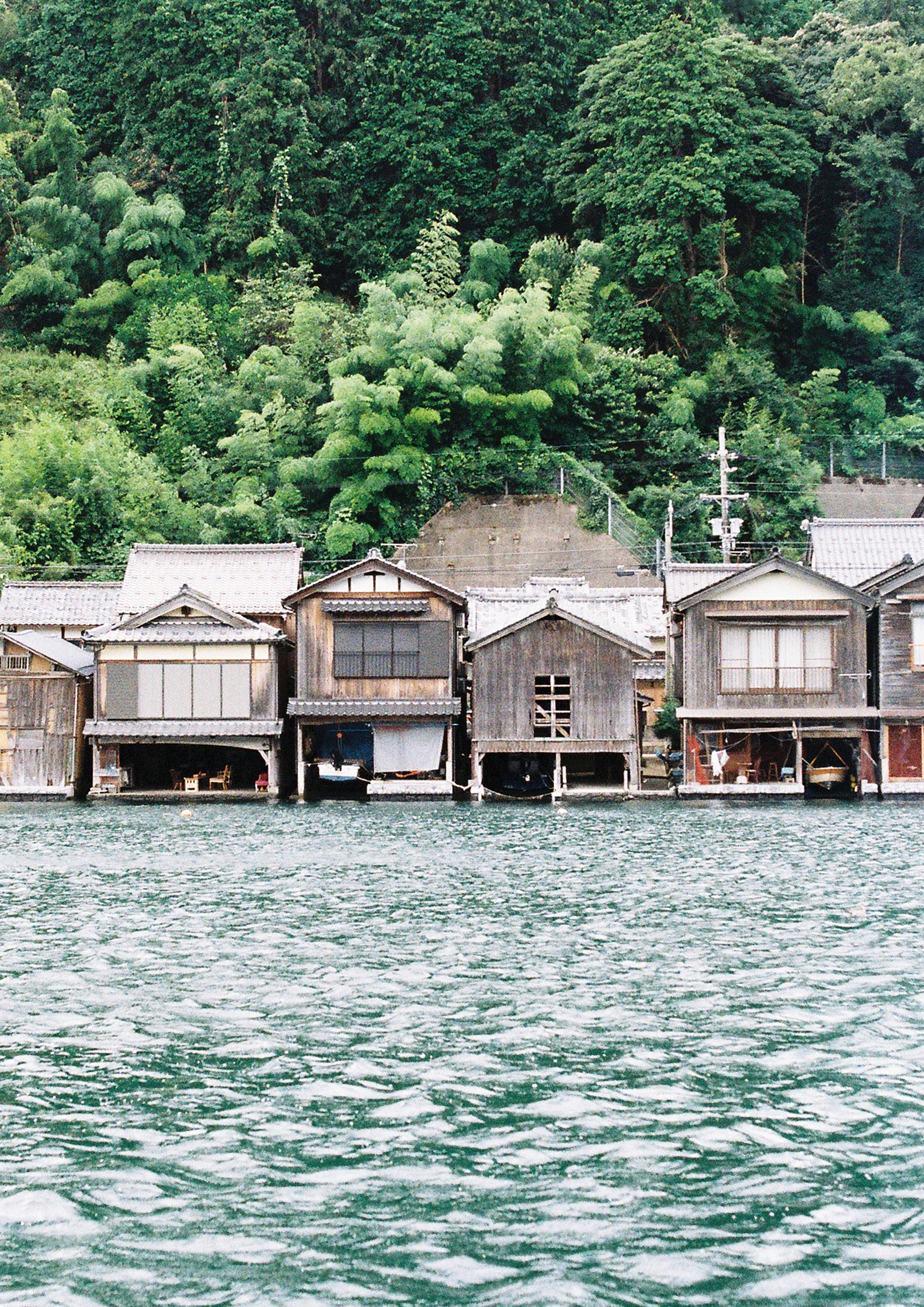การศึกษาการปรับเปลี่ยนของเรือนฟุนายะภายใต้การจัดการ Denken ในเขตอนุรักษ์ของเมืองอิเนะ ประเทศญี่ปุ่น
Main Article Content
บทคัดย่อ
ประเทศญี่ปุ่นมีการจัดการหรือระบบการอนุรักษ์สถาปัตยกรรมพื้นถิ่นที่มีประสิทธิภาพ ที่เรียกว่าเขตอนุรักษ์กลุ่มอาคาร สถาปัตยกรรม และสิ่งปลูกสร้างดั้งเดิมทรงคุณค่า หรือ “ระบบ Denken” ในหลายหมู่บ้านและเมืองต่างๆ บทความนี้มุ่งศึกษาและทำความเข้าใจกับระบบการอนุรักษ์นี้ โดยศึกษาจากพื้นที่กรณีศึกษาในเขตการอนุรักษ์ของหมู่บ้านชาวประมงอิเนะ จังหวัดเกียวโต ประเทศญี่ปุ่น และมุ่งประเด็นศึกษาอธิบายถึงการปรับเปลี่ยนของเรือนฟุนายะ ซึ่งเป็นมรดกทางวัฒนธรรมด้านสถาปัตยกรรมภายใต้การจัดการในเขตอนุรักษ์จากจำนวนนักเที่ยวที่เพิ่มมากขึ้น งานวิจัยนี้เป็นวิจัยเชิงคุณภาพ ใช้การสำรวจและลงพื้นที่ศึกษาเป็นหลัก รวมถึงมีการสัมภาษณ์ชาวประมงในพื้นที่ สมาชิกในคณะกรรมาธิการการอนุรักษ์ และเจ้าพนักงานของเขตการปกครองด้านการรักษาสถาปัตยกรรมในเมืองอิเนะ เกี่ยวกับการปรับเปลี่ยนประโยชน์ใช้สอยของเรือนฟุนายะ ผลการศึกษาต้องการอธิบายและสรุปผลถึง 2 ประเด็นหลักคือ การจัดการหรือระบบอนุรักษ์สถาปัตยกรรมทำงานอย่างไรในพื้นที่อนุรักษ์ และการปรับเปลี่ยนของเรือนฟุนายะเพื่อการท่องเที่ยวภายใต้ระบบอนุรักษ์นี้ ผลลัพธ์ที่ได้จากการศึกษาคือองค์ความรู้ที่สามารถใช้เป็นตัวอย่างกรณีศึกษาแก่ประเทศไทยในด้านแนวคิดและการจัดการสถาปัตยกรรมพื้นถิ่น หรือมรดกทางวัฒนธรรมด้านสถาปัตยกรรมในทางกายภาพของพื้นที่ชุมชน หมู่บ้าน ย่าน และเมืองอื่นๆ ที่มีบริบทคล้ายคลึงกันอีกด้วย
Article Details
เอกสารอ้างอิง
Alvarez, F. J. (2018). The shift of valuation and management in ‘Denken Chiku’ protected townscapes in Japan; comparative analysis with contemporary western protection policies. Tokyo: Waseda University.
Board of Education Ine town. (2005). Ineura dentotekikenzobutsugen hozon taisaku chosa hokokusho. (In Japanese) [Report of study for maesurement on preservation of Preserved district “Ine-ura town”]. Kyoto: n.p.
Issarathumnoon, W. (2004). The Machizukuri bottom-up approach to conservation of historic communities: lesson for Thailand. The Nippon Foundation (API Fellowships) 2003-2004, 1-20.
Koyama, S. (2019, October 15). Interview. Board of Education Ine town (教育文化財保護係伊根町教 育委員会社会).
Kyoto Prefecture. (2020). Kyotofu kanko iriko kyaku chosa hokoku sho. (In Japanese) [Kyoto prefecture tourism visitor survey report]. Retrieved November 7, 2020, from https://www.pref.kyoto.jp/kanko/1282292270316.html
Meiji and Hosei University. (2012). Design sir vei “Kenchiku Bunka” shi sairoku fukkoku. (In Japanese) [Design survey]. Tokyo: Shokokusha.
Nagahama, F. (2019, October 14). Interview. Member of the preservation area in Ine fishing village.
Oranratmanee, R. (2009). Sathapattayakam phuen thin: karn sueksa wijai lae karn patibat wichacheep. (In Thai) [Vernacular architecture: architecture education, research and practice]. Journal of the Faculty of Architecture, King Mongkut’s Institute of Technology Ladkrabang, 8 (1), 56-66.
Poonpol, D. (2004). Ruen ran kha phuen thin yeepun (Machiya). (In Thai) [Japanese shop house (Machiya)]. Journal of the Faculty of Architecture Silpakorn University. 20, 94-104.
Silapacharanan, S. (2014). The conservation of traditional waterfront markets in Thailand. Nakhara: Journal of Environmental Design and Planning, 9 (1), 57-68.
Srisakulchairak, T. (2018). Karn sueksa khunkha baan mai phuen thin Chiang Khan peua karn anurak duay krabuankarnmeesuanruam. (In Thai) [A study of value of Chiang Khan wooden house for conservation by participatory process. Journal of Environmental Design, Faculty of Architecture Chiang Mai University, 5 (1), 20-43.
Tachakitkachorn, T. (2009). Denken system in Japan: important district for preservation of a group of traditional building. Nakhara : Journal of Environmental Design and Planning, 5 (1), 55-68.
Teng, L. (2012). [Human scale development: the common goal is that Varvsstaden in Vastra Hamnen should be an attractive neighborhood with human scale strategy]. Retrieved July 11, 2020, from http://www.diva-portal.org/smash/get/diva2:831811/FULLTEXT01.pdf


